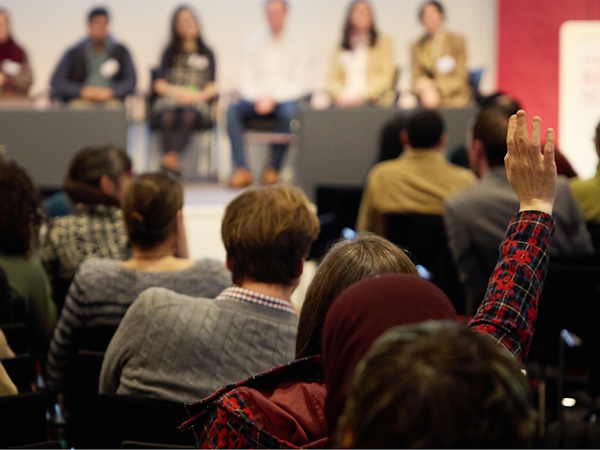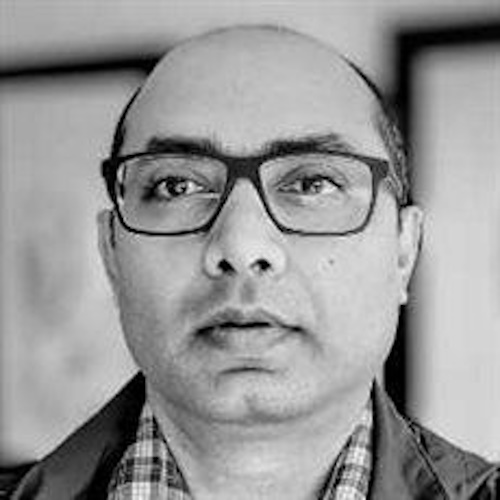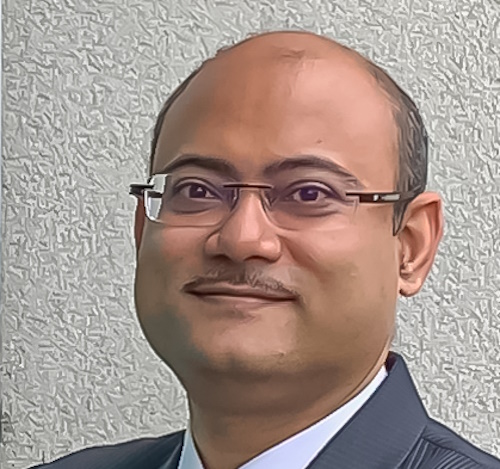Digital healthcare for the management of functional neurological disorders
Discussion meeting organised by Dr Anirban Dutta and Dr Abhijit Das.
Functional neurological disorder (FND) is a disabling condition with significant healthcare costs. A survey revealed that 50% of UK health boards lack specific FND treatment agreements. Advances in FND understanding and digital healthcare technologies, such as non-invasive brain stimulation and virtual reality, offer new treatment avenues. This discussion meeting aims to unite experts and patient groups to develop digital healthcare solutions, enhancing FND management and accessibility.
Organisers
Schedule
Chair

Professor Mark Edwards, King's College London, UK

Professor Mark Edwards, King's College London, UK
Mark Edwards (MBBS, BSc (Hons), PhD, FRCP) is Professor of Neurology and Interface Disorders at King’s College London and Honorary Consultant Neurologist at The Maudsley and King’s College Hospitals. He has a specialist clinical and research interest in Movement Disorders and Functional Neurological Disorder (FND). He did his PhD with Professor John Rothwell and Professor Kailash Bhatia at the UCL Institute of Neurology, studying the pathophysiology of genetic dystonia. Following completion of neurology training he became a Senior Lecturer and Honorary Consultant Neurologist at UCL and the National Hospital for Neurology. After moving to St George’s in 2015, he expanded this work to develop one of the first integrated diagnostic and treatment services for FND alongside continued research work into the pathophysiology of the disorder and development and testing of novel treatments, including involvement the first randomised trial of specialist physiotherapy for functional movement disorders.
| 09:00-09:10 |
Welcome by the Royal Society and lead organisers
|
|---|---|
| 09:10-09:40 |
Keynote: FND: unmet needs in digital health
Jon will review the past present and future of FND as it relates to unmet needs and how digital forms of health might improve them. He will especially comment on diagnostic precision, assessment of comorbidity, outcome measurement, access to treatment, rehabilitation and novel treatment. 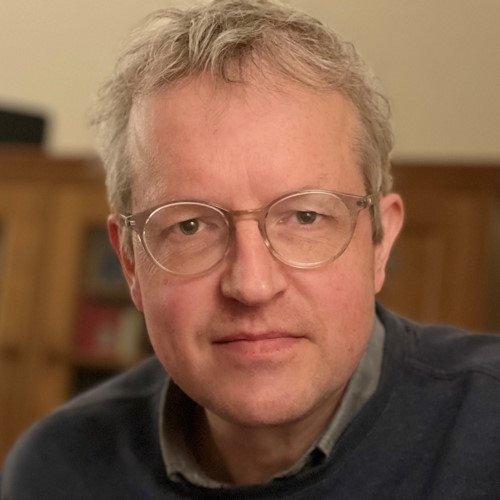
Professor John Stone, University of Edinburgh, UK

Professor John Stone, University of Edinburgh, UKProfessor Jon Stone is Professor of Neurology at the University of Edinburgh and Consultant Neurologist with NHS Lothian. Since 1999 Jon has promoted a new transparent, pragmatic and multidisciplinary approach to FND which had been a neglected and stigmatised problem |
| 09:40-10:00 |
Digital Media and FND: The patient perspective
As a charity, FND Action recognise the vital role media plays in communication, education, and support. For those diagnosed with FND, digital platforms offer unique opportunities to connect with others and access valuable resources. Online communities allow individuals to share experiences and coping strategies, helping to combat feelings of isolation. Educational resources can enhance understanding of FND, empowering individuals in their management and recovery. Whilst there are benefits, there are also drawbacks that negatively impact on this community, some of which are progressively getting worse and of great concern. This presentation explores how digital media is utilised and its outcomes, through the eyes of the patient. 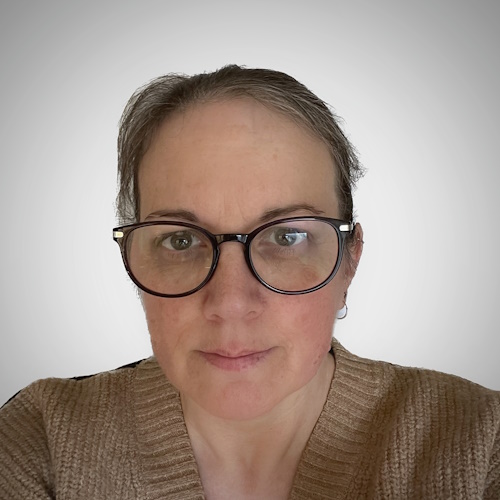
Ms Kim Hearne, FND Action, UK

Ms Kim Hearne, FND Action, UKKim Hearne is the CEO and founder of FND Action, a leading charity focused on supporting individuals with FND in the UK. With a strong commitment to advocacy and community engagement, Kim has dedicated her life to improving awareness, understanding, and treatment of FND. With attaining an in-depth knowledge of FND over the last decade, and a passion for patient advocacy, Kim has successfully led initiatives that provide education, resources, and support for individuals and families impacted by FND. Her leadership has been pivotal in fostering collaborations among medical professionals, researchers, and the FND community to enhance research and treatment options. Driven by her own lived experience, Kim is deeply committed to supporting and empowering those affected by FND. Through her work at FND Action, she aims to create a compassionate environment where individuals feel supported and understood, while also striving to reduce stigma and improve access to care. |
| 10:00-10:20 |
Fatigue in health and disease
Fatigue is a common experience, yet for many clinical populations fatigue is so prevalent and persistent that patients rate it as their worst or most debilitating symptom. This is true for individuals with neurological injury or disease, and it is also true for individuals whose illness has not yet been fully explained by medical research such as individuals with Functional Neurological Disorders (FND). However, despite its prevalence, fatigue remains poorly understood both because of imprecise definitions of fatigue and because of poor instruments to assess it. In this talk, Dr Wylie will discuss the work he has done to better understand cognitive fatigue in healthy individuals as well as in US Veterans with Gulf War Illness (which has many similarities to Chronic Fatigue Syndrome) and in individuals who have Post-Acute Sequelae of SARS CoV-2 infection (PASC, or ‘long COVID’). This work has shown fatigue-related activation in a specific set of brain regions including the caudate nucleus of the basal ganglia, the thalamus, the ventro-medial prefrontal cortex, the insula and the dorso-lateral prefrontal cortex. Furthermore, his work suggests that fatigue may be a signal the brain generates when the balance between effort and reward shifts such that the reward received for performing a given task no longer merits the effort required. 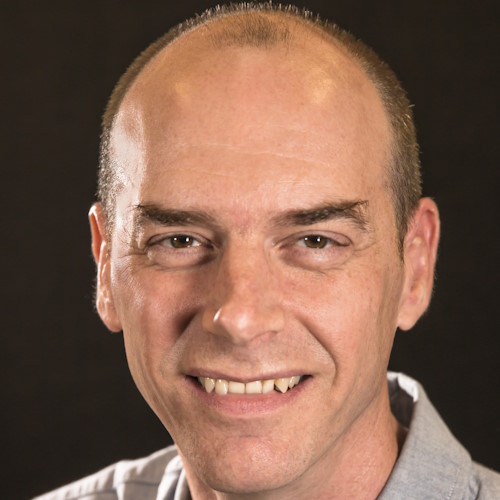
Glenn R Wylie, Rocco Ortensio Neuroimaging Center at Kessler Foundation, USA

Glenn R Wylie, Rocco Ortensio Neuroimaging Center at Kessler Foundation, USADr Wylie's research interests fall into three broad categories: cognitive fatigue, cognitive control, and the neurophysiological effects of cognitive interventions. In his work investigating cognitive fatigue, he has investigated the neural correlates of fatigue in healthy samples (both the young and the aged) as well as clinical samples such as individuals with multiple sclerosis (MS), traumatic brain injury (TBI) Stroke and COVID-19, as well as in medically unexplained illnesses such as Veterans with Gulf War Illness (GWI). In his work investigating cognitive control, he has investigated control processes in healthy samples (both the young and the aged) and clinical samples (MS, TBI, schizophrenia). In his work investigating the neurophysiological effects of cognitive interventions, he has investigated the functional changes in the brain associated with interventions such as exercise and cognitive interventions designed to improve memory. In this work, he has employed several of the tools of cognitive neuroscience including functional magnetic resonance imaging (fMRI), electroencephalography (EEG), functional Near Infrared Spectroscopy (fNIRS), positron emission tomography (PET), and behavioural measures. |
| 10:20-10:40 |
Unmet needs of patients with functional / dissociative seizures
As a group, patients with functional / dissociative seizures (FDS) are characterised by high levels of medical and psychiatric pathology often associated with disability and distress and markedly increased rates of premature death. This talk will explore the increasing gap between recognised needs and evidence-based interventions on the one hand and available diagnostic and treatment services on the other. It will highlight the urgent need for improvements and innovative solutions at a time (including a greater and more efficient use of technology) when resources for new service developments are limited. 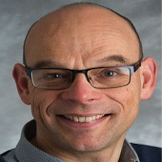
Professor Markus Reuber, University of Sheffield, UK

Professor Markus Reuber, University of Sheffield, UKMarkus Reuber splits his time between clinical research and practice. Most of his clinical work is dedicated to the treatment of patients with complex seizure disorders. His research portfolio is broad but has focussed particularly on the phenomenology and treatment of epileptic and non-epileptic seizure disorders and communication between doctors and patients. His studies have explored the use of automatic analysis of patients’ speech for diagnostic purposes and the improvement of psychotherapeutic interventions for patients with functional neurological disorder. Markus Reuber grew up in Germany. He completed his undergraduate medical studies in in Germany and the UK and his postgraduate training in neurology in Leeds and Bonn, Germany, where he completed his PhD in the largest epilepsy surgery unit in Europe. He has worked as a Consultant or Honorary Consultant Neurologist in Sheffield for over 20 years and has helped to build up the epilepsy surgery and neuropsychotherapy services there. |
| 10:40-11:00 |
Break
|
| 11:00-11:20 |
Remote monitoring of functional neurological symptoms in everyday life: identifying antecedents and correlates
Remote monitoring technologies (RMT) might be optimal tools for tracking variations in, and identifying mechanisms underlying, functional neurological symptoms (FNS). Ecological momentary assessment (EMA), for example, can illuminate moment-to-moment changes in symptoms and related states, with high temporal resolution and ecological validity. Wearable devices can objectively capture physiological signals that might predict or correlate with alterations in FNS, with minimal patient burden. However, few studies have harnessed the potential of RMT in FND to date. Dr Susannah Pick, King's College London, UK
Dr Susannah Pick, King's College London, UKSusannah is an MRC Senior Research Fellow and Honorary Senior Lecturer at the Institute of Psychiatry, Psychology, and Neuroscience, King’s College London. She trained in experimental psychology and neuroscience at Cardiff and Liverpool and completed her PhD on emotional processing and psychosocial factors in functional/ dissociative seizures at King’s College London. Susannah has been conducting research in neuropsychology and neuropsychiatry for over 20 years. Since 2008, her work has focused primarily on aetiology, mechanisms, outcomes, and treatments in FND and other closely related disorders. In her current fellowship, Susannah is leading a research programme investigating aetiological factors and psychobiological mechanisms in functional motor symptoms and functional seizures. Her work uses varied methodologies, including experimental cognitive and behavioural tasks, psychophysiology, neuroimaging, and remote measurement technologies. |
| 11:20-11:40 |
Digital healthcare for the management of FND: unmet needs in physiotherapy
Digital healthcare and technology have the potential to enhance physiotherapy practice, improve the patient experience and outcomes from treatment. Digital healthcare may provide effective solutions to current challenges including developing and validating assessment tools and outcome measurement, enhancing interventions with technology such as virtual reality and biofeedback, and monitoring function to guide progression and predict setbacks. Digital healthcare may also prove to be useful where we lack effective treatments, for example treatment of functional sensory loss. One of the greatest challenges facing people with FND is an inability to access treatment and long waiting times for specialist services. Digital technology may provide solutions to improve the efficiency of treatment resources. However, we should embrace technology with caution. Digital healthcare may not suit all people and we risk excluding some vulnerable groups. There are risks associated with replacing tried and tested treatment will less effective novel approaches, especially if market pressures drive changes. To ensure continued progression of physiotherapy and rehabilitation, we must take an open minded yet considered approach to digital healthcare. Patients and service users should be involved in all stages of development, testing and implementation. Dr Glenn Nielsen, St George's University of London, UK
Dr Glenn Nielsen, St George's University of London, UK
Glenn Nielsen is a Senior Lecturer in Neurological Physiotherapy at St George’s University of London and a clinical physiotherapist at St George’s NHS Trust. He completed his PhD in 2017, developing and assessing the efficacy of physiotherapy interventions for people with functional motor disorder. He was the chief investigator for the NIHR funded multicentre randomised controlled trial of specialist physiotherapy for functional motor disorder. He is currently leading a series of studies exploring functional somatosensory symptoms, which is funded by an HEE/NIHR Clinical Lectureship. He co-leads the UK AHP FND Network and is a founding member of the International Functional Neurological Disorder Society.
|
| 11:40-12:30 |
Discussion: Identify unmet needs in digital healthcare for individuals with functional neurological disorder
|
Chair

Professor Markus Reuber, University of Sheffield, UK

Professor Markus Reuber, University of Sheffield, UK
Markus Reuber splits his time between clinical research and practice. Most of his clinical work is dedicated to the treatment of patients with complex seizure disorders. His research portfolio is broad but has focussed particularly on the phenomenology and treatment of epileptic and non-epileptic seizure disorders and communication between doctors and patients. His studies have explored the use of automatic analysis of patients’ speech for diagnostic purposes and the improvement of psychotherapeutic interventions for patients with functional neurological disorder.
Markus Reuber grew up in Germany. He completed his undergraduate medical studies in in Germany and the UK and his postgraduate training in neurology in Leeds and Bonn, Germany, where he completed his PhD in the largest epilepsy surgery unit in Europe. He has worked as a Consultant or Honorary Consultant Neurologist in Sheffield for over 20 years and has helped to build up the epilepsy surgery and neuropsychotherapy services there.
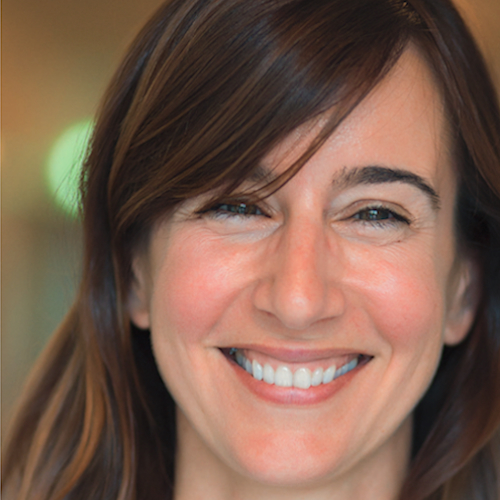
Professor Selma Aybek, Fribourg University, Switzerland

Professor Selma Aybek, Fribourg University, Switzerland
Doctor Selma Aybek is Full Professor of Neurology at Fribourg University, Switzerland. After her clinical training she did a 3-year fellowship at the Institute of Psychiatry in London at King’s College University. Her main research and clinical interest focuses on Functional neurological Disorder She has been awarded several prices for her research in the field and is member of the Board of Directors of the Functional Neurological Disorder Society.
| 13:30-13:50 |
Psychotherapy via digital tools
Professor Alan Carson, University of Edinburgh |
|---|---|
| 13:50-14:10 |
Suggestion and hypnosis for FND in the digital age
Suggestion in hypnosis refers to an intentional communication of beliefs or ideas, whether verbally or nonverbally, to produce subjectively convincing changes in experience and behaviour. Phenomenological similarities between the effects of suggestions in hypnosis and functional neurological symptoms, and potential overlapping mechanisms, have been recognised since the earliest descriptions of hypnosis in the 19th century. Suggestion in hypnosis has also been applied to the treatment of functional neurologic symptoms from this time onwards. Therapeutic suggestion is typically applied within the context of other treatment approaches, such as cognitive-behavioural, rehabilitative, or psychodynamic therapy. Suggestions are generally symptom focused (designed to resolve a symptom) or exploratory (using methods such as revivification or age regression to explore experiences associated with symptom onset). Suggestions work by creating a reversible cognitive set in which the content of the suggestion acts as a temporary high level prior that enlists association cortices to generate a congruent change in experience or behaviour. Highly hypnotically responsive individuals have an ability to increase the ‘precision’ or ‘weight’ of priors, with marked changes effected in relevant neuropsychological domains through top down modulation compared to less hypnotisable individuals. Virtual reality, by contrast, evokes compelling subjective experiences by bottom up sensory inputs that simulate a particular type of experience. As such, a targeted combination of suggestions and VR to address specific functional symptoms has the potential to bidirectionally modulate the cortical hierarchy, with the potential to enhance the responsiveness to suggestion of less hypnotically responsive individuals for therapeutic purposes. This talk considers these possibilities in more detail. Dr Quinton Deeley, King's College London, UK
Dr Quinton Deeley, King's College London, UKDr Deeley is a Senior Lecturer in Social Behaviour and Neurodevelopment at the Institute of Psychiatry, Psychology, and Neuroscience, King’s College London. He chairs the Maudsley Philosophy Group, and Social and Cultural Neuroscience Group at the IOPPN. He has researched the relations between culture, cognition, and brain function since studying Theology and Religious Studies at Cambridge University, medicine at Guys and St Thomas’, and psychiatry at the Maudsley Hospital. His work brings cognitive neuroscience research into dialogue with humanities to improve understanding of religious cognition, experience, and behaviour. Current research topics include using suggestions to alter self-experience, voice hearing in spiritualist mediums, and investigating how religious practices modulate cognition using a Virtual Reality reconstruction of an ancient Greek religious ritual. |
| 14:10-14:30 |
Unveiling the differences in the language used by professionals helping people with FND: a comparative topic and sentiment analysis
The rapid digitisation of healthcare, propelled by advancements in Artificial Intelligence (AI) and Machine Learning (ML), has revolutionised the management and analysis of Electronic Health Records (EHRs). Among the diverse techniques emerging from this technological frontier, Natural Language Processing (NLP) stands out for its ability to unveil hidden patterns, insights, and the nuanced dynamics of medical professional-patient interactions. Specifically, topic modelling and sentiment analysis provide powerful tools for deciphering the latent themes and emotional undertones in clinical documentation, offering unprecedented opportunities to understand and improve patient care. This is even more important in FND care, as FND patients often feel unheard and stigmatised by clinical professionals. We conducted an NLP-based and sentiment analysis of written records from neurologists, psychologists and other medical professionals supporting FNF patients. The results indicated remarkable differences in the type of vocabulary used and in the ‘emotional tones’ conveyed by different types of professionals when writing to and about their FND patients. Our findings have direct clinical implications and offer insights into how to develop better care pathways for people with FND and how to improve clinical training for professionals working with FND patients. 
Dr Daniela Di Basilio, Lancaster University, UK

Dr Daniela Di Basilio, Lancaster University, UKDr Daniela Di Basilio is a Lecturer in Clinical Psychology at Lancaster University and a Clinical Psychologist and CBT therapist working with people with moderate-to-severe mental health difficulties. Her research interests focus primarily on the benefits of digital interventions in clinical and non-clinical populations. She is particularly interested in understanding the benefits of digital health tools (eg apps and neurofeedback) for people with functional disorders (eg psychogenic seizures). Her recent work also focused on the application of AI-driven language analysis to understand semantic and emotional connotations of conversations between healthcare professionals and people with functional neurological disorders. She is a key researcher of the Manchester Epilepsy Research Network, a research group bringing together academics and clinicians to improve care for people living with epilepsy and psychogenic seizures. Daniela strives to bring together research and clinical practice to drive innovation in the field of functional disorders and severe mental illness. |
| 14:30-14:50 |
Improve patient communication: feedback from a multi-disciplinary service
The Rosa Burden Centre provides a 3 week multi-disciplinary programme for people with FND symptoms. Dr Mallam and her team have reviewed symptoms-based outcome measures on admission and discharge, together with 3 and 6 month follow up. She will also present information about our novel FND Liaison Practitioner role. 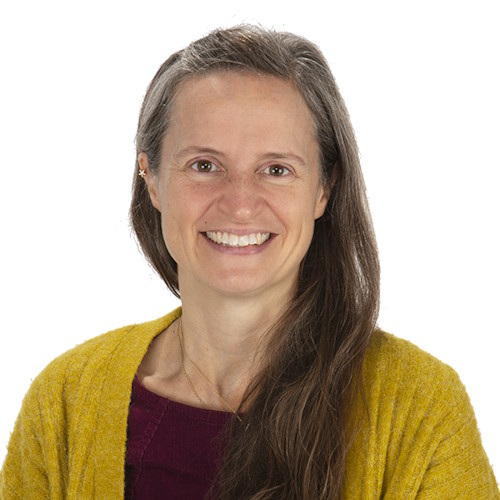
Dr Elizabeth Mallam, Southmead Hospital, UK

Dr Elizabeth Mallam, Southmead Hospital, UKDr Mallam trained in Edinburgh, London, and Bristol. She qualified as a Neurology Consultant in 2017 and has delivered 2 FND clinics a week since then. Dr Mallam is based at the Rosa Burden Centre at Southmead Hospital in Bristol. The Rosa Burden Centre has a long history of treating people with FND. Dr Mallam and the FND team were delighted to recently secure funding to expand the FND service at the Rosa Burden Centre to include a novel FND Liaison Practitioner role and expand their multi-disciplinary inpatient and outpatient programmes incorporating neurophysiotherapy, occupational therapy, and psychotherapy. |
| 14:50-15:10 |
Imaging biomarkers in FND
This talk will start by summarising recent advances in the understanding of the pathophysiology of functional neurological disorders with a focus on biomarkers. Mechanisms will be discussed in light of neuroimaging findings, summarising older finding and new advanced imaging methods including classifiers and real-time functional MRI. A link on imaging findings to clinical variables and biological markers will also be addressed. 
Professor Selma Aybek, Fribourg University, Switzerland

Professor Selma Aybek, Fribourg University, SwitzerlandDoctor Selma Aybek is Full Professor of Neurology at Fribourg University, Switzerland. After her clinical training she did a 3-year fellowship at the Institute of Psychiatry in London at King’s College University. Her main research and clinical interest focuses on Functional neurological Disorder She has been awarded several prices for her research in the field and is member of the Board of Directors of the Functional Neurological Disorder Society. |
| 15:10-15:30 |
Break
|
| 15:30-15:50 |
The application of Virtual Reality to Functional Neurological Disorder
Functional Neurological Disorder (FND) is a common and disabling condition at the intersection of neurology and psychiatry. Until recently it has fallen into the gap between physical and mental health resulting in its being relatively neglected by research and as such its mechanisms are still poorly understood and there are limited diagnostic tools and effective treatments. Virtual reality (VR) has been increasingly applied to a broad range of conditions, including neuropsychiatric disorders, mostly as a treatment modality. FND has unique features, many of which suggest the particular relevance for, and potential efficacy of, VR in both better understanding and managing it. Dr Nicholson will outline how VR might aid the understanding of FND as well as its diagnosis and treatment. He will propose a research agenda for the use of VR in FND that might be applicable or adaptable to other related disorders.
Dr Tim Nicholson, IOPPN, King's College London, UK
Dr Tim Nicholson, IOPPN, King's College London, UKDr Tim Nicholson is a Reader in Neuropsychiatry at the Institute of Psychiatry Psychology & Neuroscience (IoPPN), King’s College London, and leads the Neuropsychiatry Research and Education Group (NREG). He is an Honorary Consultant Neuropsychiatrist at the South London and Maudsley NHS Foundation Trust. His clinical and research work focuses on Functional Neurological Disorder (FND), immunopsychiatry and broader neuropsychiatric disorders - including those resulting from COVID-19. He has over 20 years of experience working clinically with FND and it was the topic of his PhD and the majority of his subsequent research activity including leading on studies into mechanisms, outcome measures and novel treatments such as Transcranial Magnetic Stimulation (TMS) and more recently psychedelics and Virtual Reality. He has published over 150 peer reviewed papers, over half of which are on FND, edited a textbook on FND, written seven book chapters on FND and multiple books on general pharmacology and specialist psychopharmacology. |
| 15:50-16:10 |
A minimalist intervention for a maximalist digital age: exploring the therapeutic potential of floatation-REST for FND
In an era where individuals, including those with functional neurological disorders (FND), experience near-constant exposure to digital signals, a minimalist approach through floatation-REST (Reduced Environmental Stimulation Therapy) offers a contrasting and potentially transformative avenue for FND treatment. Floatation-REST involves immersing individuals in a sensory-reduced environment, typically a specialised pool filled with a saturated Epsom salt solution, allowing them to float effortlessly. This non-pharmacologic approach effectively removes technological and external environmental inputs to the nervous system. Initial research from randomised controlled trials in psychiatric populations indicates that floatation-REST is safe and feasible for clinical integration. It significantly reduces anxiety levels, acutely enhances relaxation, serenity, and interoceptive awareness, attenuates autonomic arousal and pain, and improves mental clarity and well-being. Additionally, this intervention has been shown to reduce functional connectivity between default mode and somatomotor network hubs in healthy individuals and exert sustained improvements in visual body image in those with eating disorders, suggesting that changes in bodily consciousness play an important role in the induced effects. Given the substantial comorbidity of stress, anxiety, and depression with FND and emerging evidence of aberrant interoception in the disorder, floatation-REST would appear to hold promise for clinical benefit in FND. This talk will examine the potential therapeutic benefits of floatation-REST, emphasising its efficacy in reducing anxiety, enhancing relaxation and serenity, alleviating pain, and modulating aversive body representations in individuals with FND. The overall aim is to stimulate discussion on how this non-digital intervention can complement existing and emerging digital tools to achieve symptomatic improvement in individuals with FND. 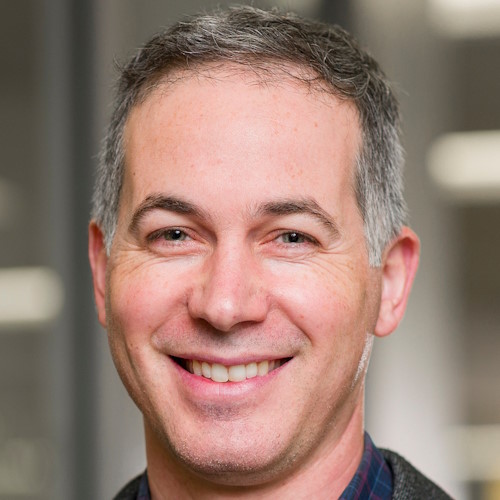
Dr Sahib Khalsa, UCLA Geffen School of Medicine, USA

Dr Sahib Khalsa, UCLA Geffen School of Medicine, USADr Khalsa is a psychiatrist and neuroscientist whose research investigates the role of interoception and digital psychiatry in mental and physical health. His studies utilise a variety of approaches including pharmacological and non-pharmacological techniques, functional magnetic resonance imaging (fMRI), electroencephalography (EEG), computational modelling, and digital applications for graphically mapping body perception and psychosocial history. Central aims of this work are to discover modifiable neuroscience-based treatment targets for psychiatric disorders, to develop tests to identify these targets in individual patients, and to design digital and neuroscience-based therapies capable of ameliorating the symptoms and signs of mental illness. |
| 16:10-16:50 |
Discussion: How to improve current and emerging digital healthcare applications in FND?
|
| 16:50-18:15 |
Poster session
|
Chair
Professor John Terry, University of Birmingham, UK
Professor John Terry, University of Birmingham, UK
John is an Interdisciplinary Professorial Fellow at the University of Birmingham, a role he holds jointly across mathematics, computer science and medicine. Holding a prestigious EPSRC Established Career Fellowship, John and his team develop and apply mathematical models and computer algorithms to develop mechanistic understanding of biomedical and clinical systems. John is internationally renowned for his work in epilepsy and neuroendocrinology, having published over 80 pieces of original research and built teams of over 30 researchers in Exeter and more recently Birmingham. John is motivated by the translation of research and is co-founder and managing director of the multi-award-winning startup Neuronostics, who have developed a UKCA-marked clinical decision support tool for diagnosis of epilepsy and differential conditions.
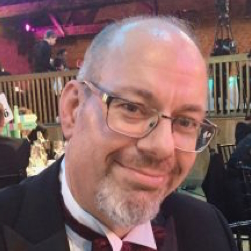
Professor Christopher James, University of Warwick, UK

Professor Christopher James, University of Warwick, UK
Professor James is a biomedical engineer and neuroscientist researching techniques for use in brain and behaviour analysis. His work spans the development of signal processing techniques applied to human brain activity, to behaviour analysis in humans and other model organisms. He has published over 170 papers in varied biomedical engineering journals and refereed conferences and has regular interaction with the press through newspaper articles, opinion pieces, radio interviews and TV programmes. In November 2012 he gave the prestigious IET Wheatstone Lecture on Brain-to-brain Communication in Chennai, India. In 2013 he was awarded the IEEE MGA Achievement Award and in 2012 the IET Sir Monty Finniston Medal. He is founding editor-in-chief of the IET Healthcare Technology Letters journal, founder and CEO of EMbody Biosignals Ltd, as well as founding director of Augmented Insights Ltd, a spinout from the University of Warwick creating pattern recognition algorithms extracting behaviour information from health data.
| 09:00-09:20 |
Delivering patient care in FND
This talk will address some of the structural and illness-specific challenges of delivering effective healthcare for people with FND, and what the opportunities might be for digital technologies to improve healthcare process and outcomes. 
Professor Mark Edwards, King's College London, UK

Professor Mark Edwards, King's College London, UKMark Edwards (MBBS, BSc (Hons), PhD, FRCP) is Professor of Neurology and Interface Disorders at King’s College London and Honorary Consultant Neurologist at The Maudsley and King’s College Hospitals. He has a specialist clinical and research interest in Movement Disorders and Functional Neurological Disorder (FND). He did his PhD with Professor John Rothwell and Professor Kailash Bhatia at the UCL Institute of Neurology, studying the pathophysiology of genetic dystonia. Following completion of neurology training he became a Senior Lecturer and Honorary Consultant Neurologist at UCL and the National Hospital for Neurology. After moving to St George’s in 2015, he expanded this work to develop one of the first integrated diagnostic and treatment services for FND alongside continued research work into the pathophysiology of the disorder and development and testing of novel treatments, including involvement the first randomised trial of specialist physiotherapy for functional movement disorders. |
|---|---|
| 09:20-09:40 |
Levelling Up - digital tools in solving mental health disparities: the good, the bad and the ugly
Mental illness is a broad church of disorders which affect nearly a billion people globally. It is a major influencer of lifelong disability and impacts on the wealth of the individual and community.
Professor Rohit Shankar MBE, University of Plymouth, UK
Professor Rohit Shankar MBE, University of Plymouth, UKRohit is a Professor in Neuropsychiatry with University of Plymouth Peninsula School of Medicine and director of its Cornwall Intellectual Disability Equitable Research (CIDER) unit. He is the Associate Dean for academic training at the Royal College of Psychiatrists (RCPsych). He is a consultant in Developmental Neuropsychiatry and Clinical Director for the Cornwall adult intellectual disability services. Awarded an MBE (2018) for services to the learning disability community, he has national/international awards including the RCPsych Digital Team of the Year (2023), RCPsych Intellectual disabilities team of the year (2021), British Medical Journal (BMJ) awards for mental health (2020), Education (2019) Neurology (2016), Innovation (highly commended-2017), ILAE Epileptic Disorders best paper (2017) and Epilepsy Foundation America SUDEP Challenge (2016). His interests are in co-producing with patients’ translational clinical research in neurodevelopmental/neuropsychiatric disorders, risk management, and health technology. |
| 09:40-10:00 |
C-low threshold mechanoreceptors: a novel target for health-tech in an increasingly touch deprived world
Chronic stress is the cause of many adverse changes in the brain: increased release of glucocorticoids, widespread inflammation, changes in neuronal morphology such as myelination in prefrontal cortex (PFC) and hippocampus (HC), reduced levels of neurotrophic factors such as Fibroblast Growth Factor2, alterations in brain connectivity especially within PFC-amygdalo-HPC networks, and circulation disruption. Chronic stress has also been found to be an antecedent of cognitive impairment and dementia. Affiliative tactile interactions buffer social mammals against neurobiological and behavioural effects of stress, and with the recent COVID pandemic, where for the first time in human evolution affective touch interactions were significantly restricted, we saw the adverse consequences on people’s stress levels and subsequent mental and physical health. But what's the mechanism? Here a case is made for the role of a relatively recently discovered (in humans) population of cutaneous low threshold thermo-mechanosensitive c-fibres called c-low threshold mechanoreceptors (C-LTMR) as a neurobiological substrate responsible for regulating resilience to stress. These 1st order neurones are velocity tuned, preferentially encoding gentle, dynamic touch delivered at ~3 cm/sec, projecting centrally to dorsal posterior insular cortex and ACC. C-LTMRs are now being understood to provide a singular vital protective function, from the nurturing touch of the mother. Deprivation of nurturing touch causes life-long adverse neurodevelopmental consequences. There is now evidence of C-LTMRs putative role in dementia. By analogy with the vital role vitamins play in physical health, affective touch and its neuronal substrate the C-LTMRs, can be described as ‘Vitamin-T’ for the social brain. 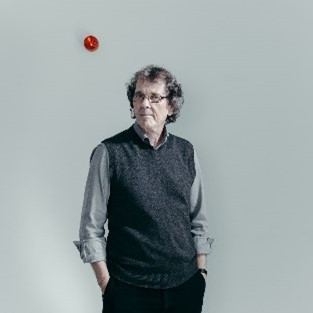
Professor Francis McGlone, Manchester Metropolitan University, UK

Professor Francis McGlone, Manchester Metropolitan University, UKFrancis McGlone is Professor in Neuroscience, Visiting Professor, Manchester Metropolitan University, and Aalto University, Finland. He has a long-term interest in the function of the different classes of sensory nerves innervating the skin, particularly those that code for touch, temperature, pain, itch (for which an Ig Nobel prize was awarded) and the recent discovery of a population of unmyelinated gentle touch sensitive c-fibres that are hypothesised to be the neurobiological substrate for ‘affective touch’. He has focussed the past ~25 years, in collaboration with his Swedish colleagues, to characterising the functional properties of this system of nerves, C-Low Threshold Mechanoreceptors, and their emerging role across the lifespan in underpinning physical and mental health. Techniques used in this research span single unit recordings with microneurography, psychophysical measurements, functional neuroimaging, behavioural measures, and psychopharmacological approaches. He is Founder & President of the International Association for the Study of Affective Touch (IASAT). |
| 10:00-10:20 |
Affordable digital tools for FND: an international perspective
Functional Neurological Disorder (FND) is often associated with significant morbidity. The estimated incidence is 4–10/100,000 and is more common in adults. In South Asian countries, the prevalence is as high as 31% and twice as common in women than in men. The economic burden of clinic-based care is high due to the involvement of multiple specialties and extensive investigations. Studies showed an excess annual cost associated with FND (range $4,964-$86,722 2021 US dollars), which consisted of both direct and large indirect costs. Studies showed promise that interventions, including the provision of a definitive diagnosis, could reduce this cost. The assessment and therapy may be stretched over longer periods and contribute to care costs. Hence, innovations for a definitive diagnosis and effective monitoring and management can reduce the care burden. The digital tools appear promising in the detection of triggering factors, promoting positive behavioural changes, self-monitoring, and therapy and networking for online community support and teleconsultation. The limiting factors to access appropriate care appear to be affordability, access to devices, literacy, and privacy in lower resource settings. In lower and middle countries, patriarchal and collectivistic societies having access is a challenge. According to a telecommunications report, there are up to 50% of Indians, with internet access. The smartphone penetration in India, however, reached 71% in the financial year 2023. Thus, with rising mobile phone penetration, and reduced data charges, digital tools especially mobile applications hold a promise for effective management of FND symptoms in lower resource settings. 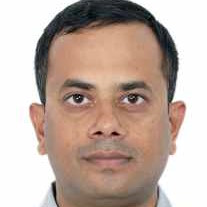
Dr Harish Thippeswamy, National Institute of Mental Helth and Neuro Sciences, India

Dr Harish Thippeswamy, National Institute of Mental Helth and Neuro Sciences, IndiaDr Harish Thippeswamy joined as a faculty at the National Institute of Mental Health and Neuro Sciences (NIMHANS), India in the year 2007. He is a professor since 2018. His areas of interest include women's mental health and neuropsychiatry. He has published original research on the interface between neurology and psychiatry- infectious disorders, autoimmune disorders, and functional disorders. He heads the consultation-liaison (C-L) psychiatry and neuropsychiatry services at NIMHANS. He supervises the clinical services and training of postdoctoral fellows in C-L Psychiatry, and Neuropsychiatry. |
| 10:20-10:40 |
Applications of modular robotics in neurorehabilitation research
This talk will present an overview of the applications of robotics and immersive technologies in neuro-rehabilitation research. Robotics technology and virtual reality systems found multiple useful applications in neuro-rehabilitation research and clinical practice. Rehabilitation robotics and assistive technology enable clinicians to perform complex, monotonic and time-consuming physiotherapy tasks more easily supporting faster and more efficient patient recovery. The talk will specifically address the issue of rehabilitation technology accessibility, and design aspects that can improve its affordability and breadth of applications. To address the technology affordability, examples of modular robotic systems designed for the upper limb will be presented and the potential of at-home based tele-rehabilitation will be discussed. 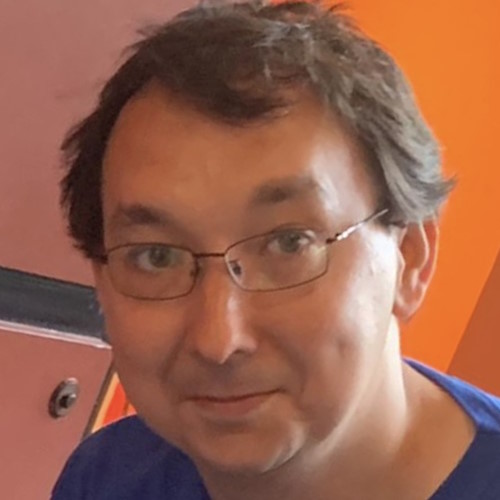
Dr Ildar Farkhatdinov, King's College London, UK

Dr Ildar Farkhatdinov, King's College London, UKDr Ildar Farkhatdinov is a Senior Lecturer in Healthcare Engineering (Robotics and Mechatronics) at King’s College London, UK. He is an internationally leading expert in assistive robotics and human-machine interaction with applications to rehabilitation, neurosciences and immersive environments. He is a principal investigator of several projects on wearable robotics, mobility assistance and haptic interfaces. Several of his research works were recognised as the best paper or finalists for best paper awards at leading robotics conferences. Before joining King's, he was an academic at Queen Mary University of London and a researcher at Imperial College London, UK. He earned PhD in Robotics in 2013 (Sorbonne University, UPMC, France), MSc in Mechanical Engineering in 2008 (KoreaTech, South Korea) and BSc in Automation and Control in 2006 (Moscow University, Russia). He is a co-founder of Human Robotix Ltd, a London-based start-up aiming to develop novel robotic technologies for human neuro-muscular system research. |
| 10:40-11:00 |
Break
|
| 11:00-11:20 |
Exoskeleton-mediated gait training in pediatric populations: moving from the clinic to the community
Children with neuromuscular disorders suffer from a combination of motor control deficits and lower limb weakness resulting in a range of gait impairments. Robotic exoskeletons offer a potential solution to improve mobility in these individuals; their modularity in design and implementation enable the ability to tailor devices to meet individual user needs. Initial cohort studies of these technologies, performed mostly in clinical settings, demonstrate their effectiveness as assistive devices to improve gait biomechanics. Their promise as therapeutic interventions to improve long term function is less clear. This talk will highlight key advances made by the Neurorobotics Research Group at the US National Institutes of Health to explore this application, including novel approaches to the use of exoskeletons to resist or challenge limb movement during walking as a form of gait training. The design of and initial results from a randomized crossover study to determine whether 12 weeks of this overground gait training delivered in the community setting is effective will also be presented. Finally, this presentation will consider the context of other relevant advances within the field and discuss future directions for improving functional recovery in children with neurologic disorders. 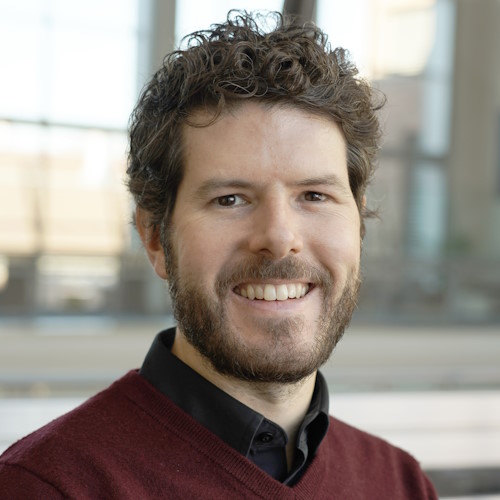
Dr Thomas C Bulea, National Institutes of Health Clinical Center, USA

Dr Thomas C Bulea, National Institutes of Health Clinical Center, USAThomas C Bulea received the BS in mechanical engineering from The Ohio State University and MS and PhD in biomedical engineering from Case Western Reserve University. He completed post-doctoral fellowships at the University of Houston and the National Institutes of Health Clinical Center. He joined the NIH Clinical Center in 2014 as a staff scientist and since 2021 has been a tenure track investigator in the Neurorehabilitation and Biomechanics Research Section of the Rehabilitation Medicine Department, where he leads the Neurorobotics Research Group. Dr Bulea’s research interests include functional neuroimaging, neural interfacing, and rehabilitation robotics and exoskeletons for treatment of movement disorders. Dr Bulea also serves the Training Director for the Rehabilitation Medicine Department and as an Associate Editor of Wearable Technologies and IEEE Transactions on Neural Systems and Rehabilitation Engineering. |
| 11:20-12:30 |
Discussion: Technologies to shift the emphasis of FND management to home and community settings
|
Chair

Professor John Stone, University of Edinburgh, UK

Professor John Stone, University of Edinburgh, UK
Professor Jon Stone is Professor of Neurology at the University of Edinburgh and Consultant Neurologist with NHS Lothian. Since 1999 Jon has promoted a new transparent, pragmatic and multidisciplinary approach to FND which had been a neglected and stigmatised problem
In 2009 he made the first website (and now app), the Neurosymptoms FND guide, for patients with FND which is now widely used across the world. He has published over 350 articles in the area including large cohort, mechanism and treatment studies. and led on new international diagnostic criteria for FND. He is currently President Elect and was co-founder, with Mark Hallett and Alan Carson of the new international FND society which now has 1500 members.
His awards include the Jean Hunter prize from the Royal College of Physicians (2014), the Royal College of Psychiatry President’s Medal (2017), the Ted Burns Humanism in Neurology Award from the American Brain Foundation (2020) and the John Walton Lecture Award from the Association of British Neurologists (2022).
| 13:30-13:50 |
Dynamic network models for diagnosis and treatment of epilepsy and other seizure disorders
In this talk a mathematical framework for understanding transitions between apparently healthy brain states and seizure-like states is introduced. A dynamic network model consists of a mathematical model that describes how the dynamics within a node varies over time with nodes coupled together through directed or undirected graphs. The developed framework is used to describe mechanistic properties of the network that make seizures more (or less) likely. Algorithms are introduced from which properties of the mathematical model can be informed directly from clinical imaging data such as electroencephalography (EEG). In this context, nodes now represent brain regions (as reflected from channels of the EEG) and edges determined by functional connectivity. Those mechanistic properties that best explain transitions to seizure states are considered as candidate biomarkers from which a statistical classifier is developed and applied in a large cohort of clinically non-contributory EEG recordings from both people with epilepsy and other conditions. The potential for the approach to provide meaningful clinical decision support is discussed. Professor John Terry, University of Birmingham, UK
Professor John Terry, University of Birmingham, UKJohn is an Interdisciplinary Professorial Fellow at the University of Birmingham, a role he holds jointly across mathematics, computer science and medicine. Holding a prestigious EPSRC Established Career Fellowship, John and his team develop and apply mathematical models and computer algorithms to develop mechanistic understanding of biomedical and clinical systems. John is internationally renowned for his work in epilepsy and neuroendocrinology, having published over 80 pieces of original research and built teams of over 30 researchers in Exeter and more recently Birmingham. John is motivated by the translation of research and is co-founder and managing director of the multi-award-winning startup Neuronostics, who have developed a UKCA-marked clinical decision support tool for diagnosis of epilepsy and differential conditions. |
|---|---|
| 13:50-14:10 |
Taking BCI into the home: signal processing challenges
Making ‘real-world’ BCI, ie a wearable BCI system that can be used in the home, poses specific challenges in managing and extracting useable information from systems that by design are smaller and less intrusive and, usually, have fewer recording channels which are most probably scalp (EEG) based. This talk addresses the issues that arise when trying to extract meaningful information from single or few channel, noisy, recordings. The talk pays particular attention to data-driven methods to information extraction, specifically in blind source separation where information is extracted from recordings using particular criteria such as, for example, statistical independence, which is the case in Independent Component Analysis. This process is made more difficult due to the low-channel count and the limited spatial/ contextual information; the talk will address ways in which this can be addressed. Overall, it is possible to see that despite low channel counts and challenging recording environments it is possible to extract meaningful and useful information from noisy data using well-structured and powerful assumptions about the data and its acquisition. 
Professor Christopher James, University of Warwick, UK

Professor Christopher James, University of Warwick, UKProfessor James is a biomedical engineer and neuroscientist researching techniques for use in brain and behaviour analysis. His work spans the development of signal processing techniques applied to human brain activity, to behaviour analysis in humans and other model organisms. He has published over 170 papers in varied biomedical engineering journals and refereed conferences and has regular interaction with the press through newspaper articles, opinion pieces, radio interviews and TV programmes. In November 2012 he gave the prestigious IET Wheatstone Lecture on Brain-to-brain Communication in Chennai, India. In 2013 he was awarded the IEEE MGA Achievement Award and in 2012 the IET Sir Monty Finniston Medal. He is founding editor-in-chief of the IET Healthcare Technology Letters journal, founder and CEO of EMbody Biosignals Ltd, as well as founding director of Augmented Insights Ltd, a spinout from the University of Warwick creating pattern recognition algorithms extracting behaviour information from health data. |
| 14:10-14:30 |
Non-invasive wearable bioelectronic interfaces
Wearable devices, allowing the monitoring of a wide range of physiological parameters, are having a transformative impact on health and wellbeing applications. We are now able to collect longitudinal data in a way never previously possible. At the same time, current wearables have a wide range of open opportunities for making them even better, from improving accuracy, to improving comfort, to embedding real-time machine learning bases analyses. This talk will provide an overview of these different topics. It will start with a high-level overview and roadmap for future wearable hardware, with particular emphasis on advances being enabled by emerging flexible electronics. I will then present examples of our work on data science and machine learning applied to wearable data. 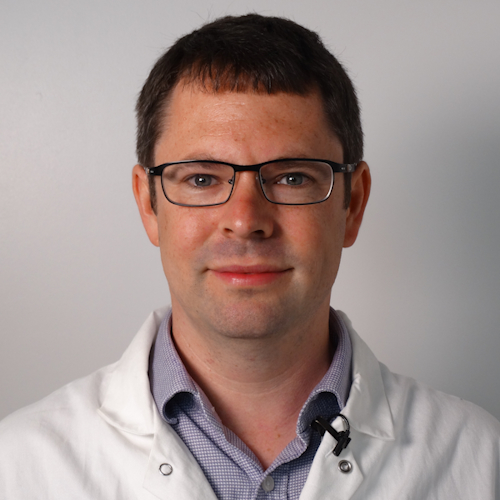
Professor Alex Casson, University of Manchester, UK

Professor Alex Casson, University of Manchester, UKAlex Casson is Professor of Biomedical Engineering at the University of Manchester. He is a specialist in non-invasive bioelectronic interfaces: the design and application of wearable sensors, and skin-conformal flexible sensors, for human body monitoring and data analysis from highly artefact prone naturalistic situations. Professor Casson’s ultra-low power sensors work is mainly for health and wellness applications, with a strong background in brain interfacing (EEG and transcranial current stimulation) and heart monitoring. Applications focus on both mental health situations including chronic pain, sleep disorders, and autism, and physical health/rehabilitation applications including diabetic foot ulceration, and chronic kidney disease. He has particular interests in closed loop systems: those which are tailored to the individual by personalised manufacturing via printing; and tailored to the individual by adjusting non-invasive stimulation (light, sound, electrical current) using data driven responses/outputs from real-time signal processing. |
| 14:30-14:50 |
Learning embeddings of spatio-temporal neural activity
Emerging data-driven modelling methods are affording new opportunities for building bio-inspired models for neural activity. Of particular interest is understanding how neural pathways from input stimuli to behavioural responses function. Importantly, data-driven models are capable of framing neurosensory integration into a modern framework, allowing for an improved understanding of the role of network structure and function. Specifically, the encoding space of neural activity can be extracted from modern mathematical methods with a goal of improved scientific understanding. 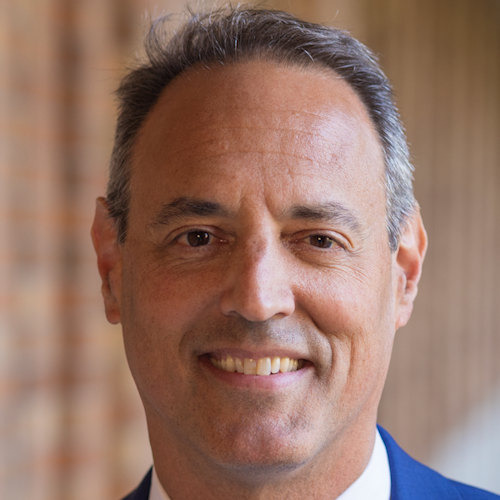
Professor J Nathan Kutz, University of Washington, USA

Professor J Nathan Kutz, University of Washington, USAJ Nathan Kutz received the BS degree in physics and mathematics from the University of Washington, Seattle, WA, USA, in 1990, and the PhD degree in applied mathematics from Northwestern University, Evanston, IL, USA, in 1994. He is currently the Director of the AI Institute in Dynamics Systems, the Boeing Professor of AI and Data-Driven Engineering, Professor of applied mathematics and electrical and computer engineering, and a Senior Data Science Fellow with the eScience Institute, University of Washington. He works at the interaction of machine learning and the dynamics of complex systems. |
| 14:50-15:10 |
Applying OPM/ MEG to study attention mechanisms in adults and children
When we read, we move our eyes every 250 milliseconds. This means there is very little time between eye movements to process the words we are fixate at, decide where to look next, and move our eyes. To better understand the brain mechanisms of the fast attentional mechanisms supporting natural reading, we combined MEG and eye-tracking recordings. Participants were asked to read sentences while their brain activity and eye movements were recorded. We found that parafoveal words being saccade goals are processed surprisingly fast at the semantic level. This previewing predicted individual reading speed. To investigate these mechanisms in children learning to read, we are adapting our OPM/MEG system such that it can be used for paediatric recordings. The aim is to gain insight into the reading mechanisms that need to be developed in children to support proficient reading. 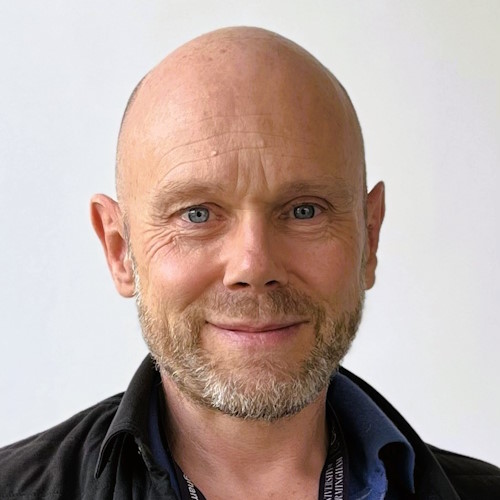
Professor Ole Jensen, University of Birmingham, UK

Professor Ole Jensen, University of Birmingham, UKOle Jensen received his MSc in Electrical Engineering in 1993 from the Technical University of Denmark and his PhD in Neuroscience in 1998 from Brandeis University, specialising in computational modelling of oscillatory networks. He was a then postdoctoral fellow at Helsinki University of Technology, using magnetoencephalography (MEG) to explore brain dynamics. In 2002, he became head of the MEG laboratory at the Donders Institute and principal investigator in 2003. He was appointed professor at Radboud University Nijmegen in 2013, and in 2016, professor in translational neuroscience at the University of Birmingham, co-founding the Centre for Human Brain Health. His research focuses on linking oscillatory brain activity to cognition, particularly memory and attention, and developing a paediatric OPM-MEG system. |
| 15:10-15:30 |
Break
|
| 15:30-15:50 |
Transcranial electrical stimulation targeting limbic cortex increases the duration of human deep sleep
It is now widely recognised that physical and psychological well-being are dependent on good sleep. Sleep is marked by clearly identifiable physiological states that define stages of sleep, with different stages involved in different physiological and cognitive processes. An important sleep stage that may be involved in brain clearance of toxins and memory formation is slow-wave sleep (also known as deep sleep). We present evidence that slow-wave sleep can be enhanced through use of a portable, user-friendly device deployed in the home. This closed-loop transcranial electrical stimulation technology detects when a person is about to enter slow-wave sleep and injects low-level current to sustain and enhance this sleep stage. The ability to selectively enhance slow-wave sleep has significant implications for health. 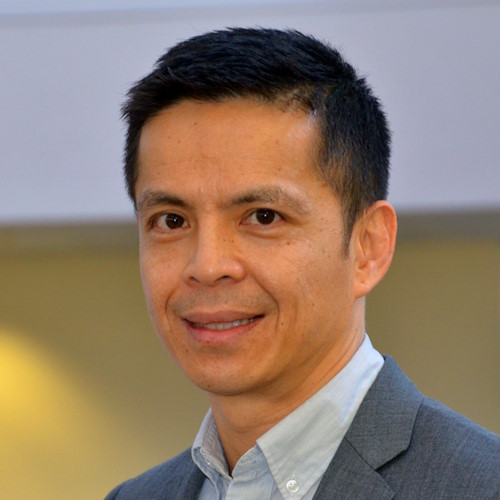
Phan Luu, Brain Electrophysiology Laboratory, Neurosam, University of Oregon, USA

Phan Luu, Brain Electrophysiology Laboratory, Neurosam, University of Oregon, USAPhan Luu is Chief Scientist at BEL and Neurosom. He is an active scientist whose scientific publications cover brain evolution, brain mechanisms of self-regulation, sleep, transcranial electrical stimulation and brain imaging. He has over 25 years of experience in industry directing commercial development of research and clinical technologies. He is also experienced with clinical trials and the regulatory process of bringing new technologies to clinical practice. |
| 15:50-16:40 |
Discussion: digital healthcare in FND: risks, challenges, and solutions
Discussion panel formed of Professor Siddhartha Bandyopadhyay, University of Birmingham, Professor Charles Phelps, University of Rochester, USA, and Professor Darius Lakdawalla, USC Price School of Public Policy, USA. |
| 16:40-17:00 |
Panel discussion on future directions
|

.png)
